The sun had barely risen over Kampala when we drove past the swathes of waste that have become a familiar sight along the city’s main roads.
In neighborhoods like Wandegeya, Bwaise and Nakawa piles of plastic, food leftovers and household trash lined streets and clogged drainage channels. The stench was unavoidable, a constant reminder of the city’s long-standing struggle with garbage.
Kampala generates over 2,500 tonnes of solid waste daily yet less than half is collected. The rest finds its way into wetlands, roadside dumps and drainage channels increasing the risk of floods and waterborne diseases.
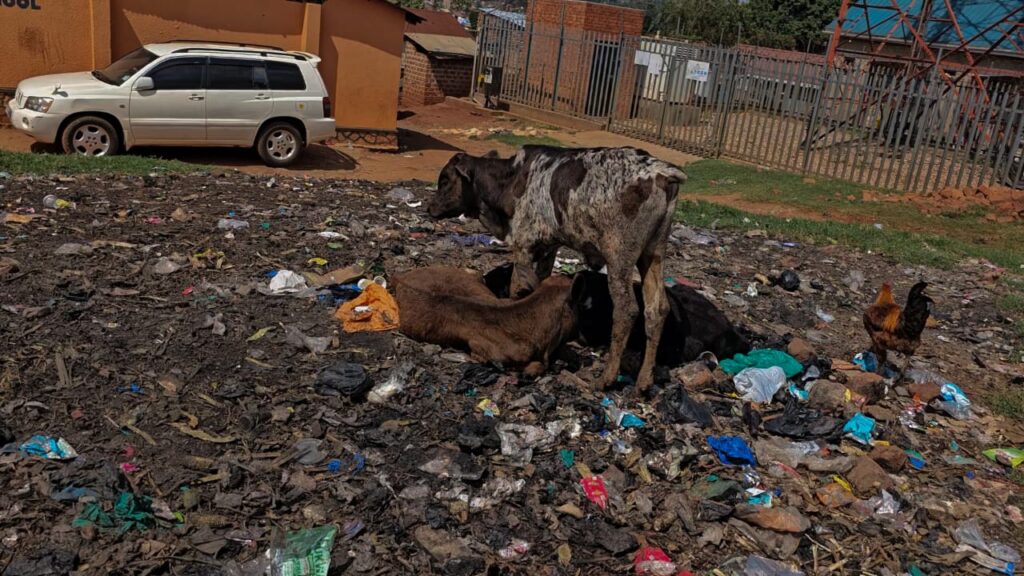
For many residents garbage has become part of the urban landscape but while the problem is visible the solutions remain frustratingly out of reach.
“If the city generates over 2,500 tonnes of waste daily yet companies like Homeclean are relying on Isuzu trucks without even having compactors or landfills it is clear the system lacks capacity,” Elias Lukwago, the Capital’s Lord Mayor, told Ukweli Africa’s Reporter.
“Some attempted to buy dump sites but they remain non-functional. We cannot continue with these rudimentary methods. What is needed first and foremost is for the government to invest properly in solid waste management instead of treating it as an unfunded priority.”
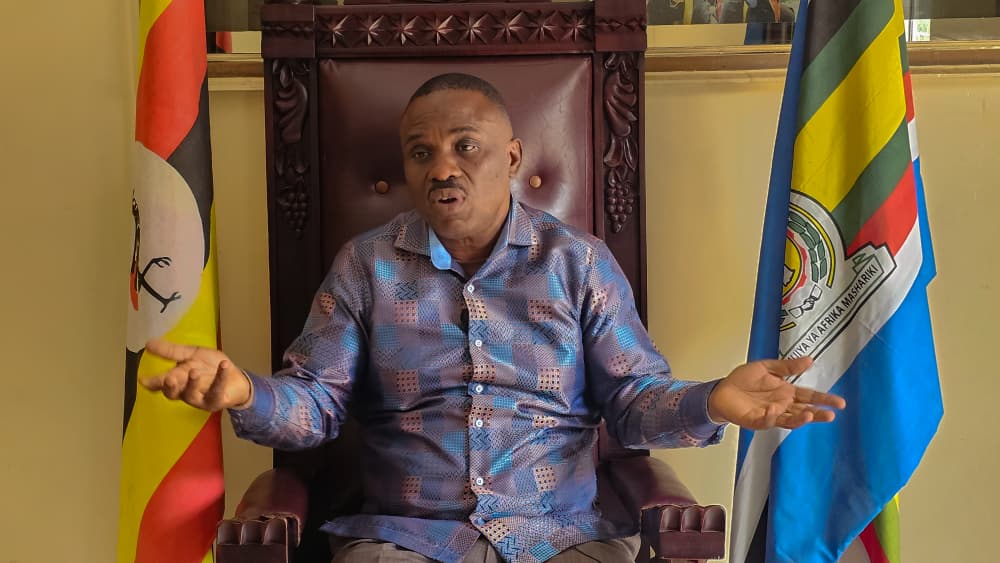
According to Kampala Capital City Authority KCCA the city generates between 2,000 and 2,500 tonnes of waste per day but is only able to collect and dispose of approximately 1,300 to 1,500 tonnes.
This means roughly half of Kampala’s waste is left uncollected or improperly dumped contributing to ungazetted waste sites across all five divisions of the city and the Greater Kampala Metropolitan Area.
Organic waste accounts for the largest portion of refuse with the bulk ending up at the city’s former main landfill in Kiteezi.
How Waste is Managed
Kampala is organized into seven collection zones each managed by private companies under a Public-Private Partnership PPP arrangement. These companies M/s Kampala Solid Waste Management Consortium, M/s Homeklin U Limited and M/s Nabugabo Updeal Joint Venture have exclusive rights to collect garbage in their zones. Zone 1 and Zone 6 currently have no appointed company according to the KCCA website.
The companies charge between UGX 3,000 for “bring-to-truck” services and UGX 30,000 per month for premium collection services, typically three bags per week. Collected waste is transported to a landfill which then before its collapse in 202 was Kiteezi landfill located about 12 kilometers from the city center.
KCCA remains the overarching authority for waste management and landfill operations. Through the Kampala Solid Waste Management Ordinance 2000 the city can contract private operators to collect transport and recycle waste.
Independent companies handle waste segregation and recycling providing infrastructure such as refuse skips and collection centers. Despite the involvement of private operators KCCA still collects waste from public spaces and informal settlements.
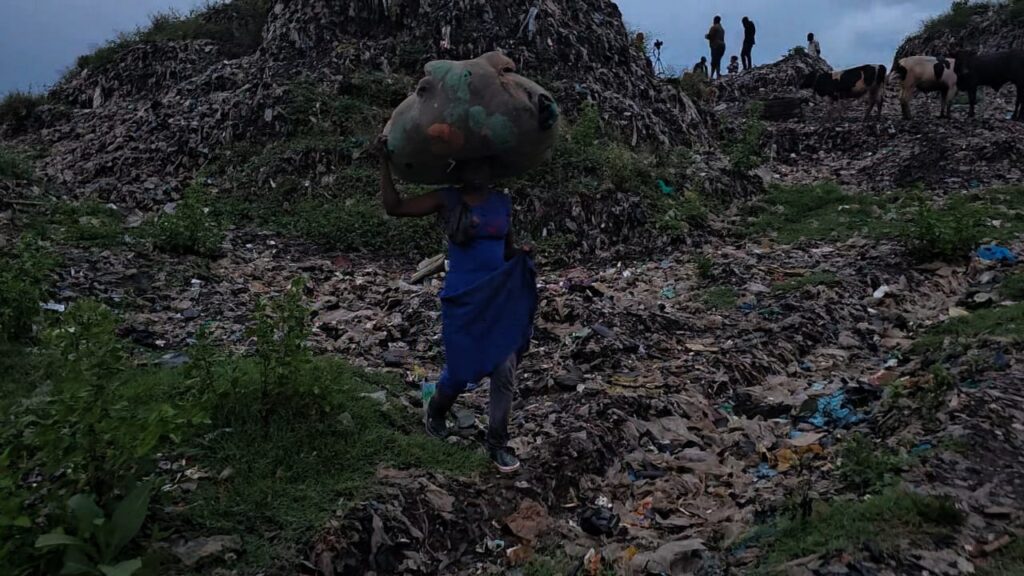
In 2018, KCCA released a report stating that Kampala was home to about 1.68 million residents, with a daytime population rising to nearly 4.5 million. Originally built to host only 300,000 people, the city has grown far beyond its planned capacity, leaving infrastructure and urban planning struggling to keep pace.
Every day, this big population in Kampala generates more and more tonnes of solid waste, yet less of it is formally collected and transported to landfills by KCCA and its private partners. The rest is dumped in open spaces and drainage channels, worsening flooding and pollution.
A brief released by KCCA on waste and recycling in the city shows that organic waste makes up the largest share of the city’s garbage, with an average moisture content of 71 percent.
During wet seasons, 88 percent of the waste collected is organic, rising to 94 percent in dry months.
With the city’s growing population, Kampala’s waste management system is under immense pressure, struggling to keep up with the volume and complexity of the challenge.
Kiteezi Landfill Lives Lost to Trash
The Kiteezi landfill was a major disaster that showed how bad poor waste management can get. Waste that is not managed well can kill people, can destroy property and it can displace people.
Mubiru Kamada, a resident of Kiteezi, carries a painful memory of how trash destroyed his life in 2024. Kamada who was then living in Lusanja near the Kiteezi landfill woke up one morning expecting a normal day not knowing tragedy awaited him.
His mother and children lived nearby and as usual he left home for work as a motorcycle rider. But shortly after he received a call telling him that heaps of trash had collapsed burying his home and killing his family.
“I found piles of trash everywhere. They had covered my home and even the usual path I used to take. I had nowhere to pass, nowhere to go. Trash was all over the place,” he recalled his voice heavy with grief.
“Because of poor waste management I lost my mother, my children and my young sister. In total I lost five people,” he said quietly.
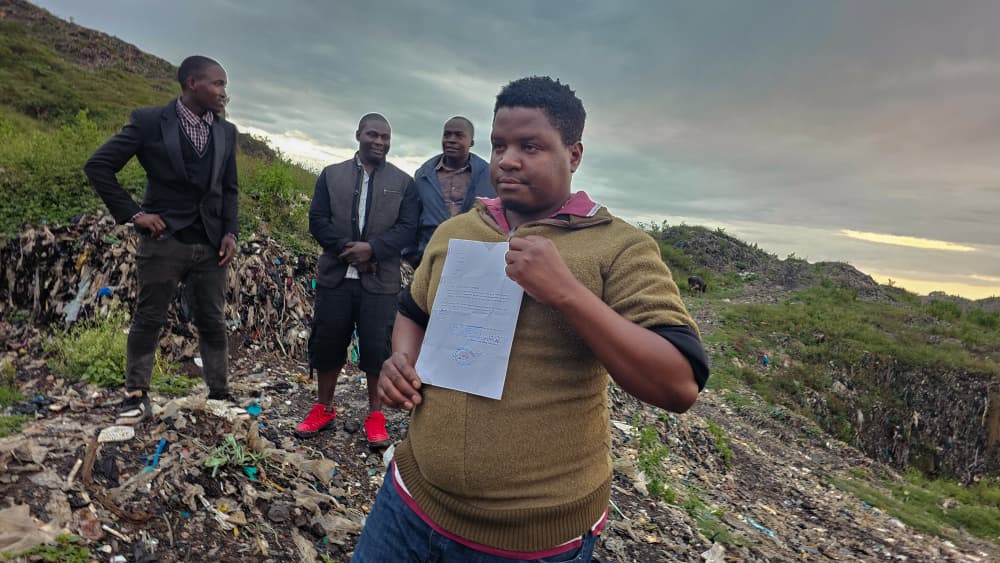
According to Kamada, days before the landfill collapsed, officials from government agencies had come to inspect the area. “It was like they knew something was going to happen,” he said.
He and other victims say they have never been compensated. “We lost land, we lost property and we have never received any help. Trash filled our homes and covered what we used to call our land. Now the area is guarded by the military and when we come close we are beaten. We had our homes, our land and our dignity all buried under garbage,” he said.
Another resident Mutaawe Fred remembers the horror of the day the landfill collapsed. He woke up to find garbage halfway inside his house. “I saw dust and trash filling the entire place. I had nowhere to pass. Luckily my children were at school at the time. If they had been home I don’t know what would have happened,” he said.
Mutaawe lost all his property to the collapse. “Everything I owned was buried. The landlord is now evicting me because the place is no longer safe. So far the government has only given us two million shillings in assistance yet what we lost is far greater. I used to live a simple life but the failure to manage waste properly has left us with nothing,” he said.
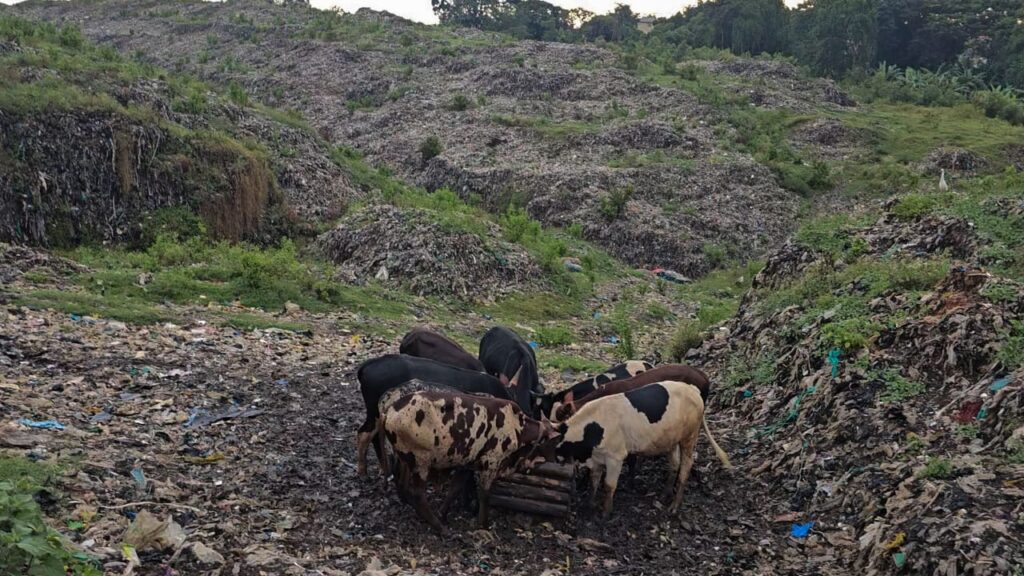
These are just some of the voices of those who have paid the heavy price for Kampala’s poor waste management people whose lives, homes and livelihoods were swallowed by the city’s garbage.
One of the major challenges for Kampala City is waste management. Projected population and waste generation figures indicate that the rate of generation and accumulation of solid waste in particular shall be far beyond the current capacity for collection and disposal services.
The situation is exacerbated by lack of a robust solid waste management system to handle, monitor, coordinate, finance, plan and control the entire waste flow chain from generation, collection, transportation, disposal, treatment and re-use.
Turning Waste Into Resources
In Kamwokya, a busy informal settlement in the heart of Kampala, a group of residents has found a way to turn waste into opportunity. Among them is 28-year-old Mujuzi Patrick, the team lead and founder of Ghetto Research Lab Uganda, a community-based organization using creativity and science to tackle environmental challenges.
Using plastic bottles and polythene bags Mujuzi and his team make eco-friendly bricks now used to construct toilets and other structures within the community.
Ghetto Research Lab Uganda is a nonprofit civil society organization that focuses on innovations that conserve the environment and make it sustainable.
“We are running a number of projects and coming up with new ideas every day,” says Mujuzi. “One of our main innovations is aquaponics, a system that combines aquaculture and hydroponics. We rear fish and grow plants floating on water with each benefiting from the other. The fish waste becomes food for the plants and the oxygen from the plants helps the fish survive in the same water.”
For Mujuzi and his team, waste is not the end of a cycle but the beginning of something new, a resource that can rebuild both the environment and livelihoods in Kampala’s most neglected neighborhoods.
The team’s major project is waste management. Under it they run several innovations including plastic management with sub-initiatives like paver making and plastic eco-bricks.
“Plastic eco-brick is where we collect littered plastic bottles and fill them with polythene of any kind to make a tough brick that can be used for construction,” Mijuzi says.
“For instance a 500-milliliter bottle can hold more than 300 pieces of polythene depending on the thickness. The resulting brick is so strong that it could even make skyscrapers. But we don’t build skyscrapers in the ghetto. We use them to construct eco-plastic toilets instead.”
The inspiration behind the project came from his love for music and his desire to tackle youth unemployment and environmental degradation at the same time.
“I wanted to combine my music with the issue of youth unemployment and the degrading environment. We made music, organized community shows and carried out cleaning exercises to both entertain and educate people. We used to call KCCA to come and collect the trash we had gathered but sometimes they came and sometimes they did not. That got us thinking, what if we innovated around the trash instead of giving it away?”
That idea sparked what would become Ghetto Research Lab’s signature innovation. “We started inserting polythene into plastic bottles and discovered it made a tough brick suitable for construction,” he says with pride. “Our first project was to build small eco-toilets here at the Ghetto Research Lab.”
The Ghetto Research Lab has turned waste into both opportunity and utility creating solutions that benefit the community and the environment. One flagship project is the eco-plastic compost toilet constructed in 2020 after winning the Aga Khan Challenge aimed at supporting vulnerable children post-COVID-19.
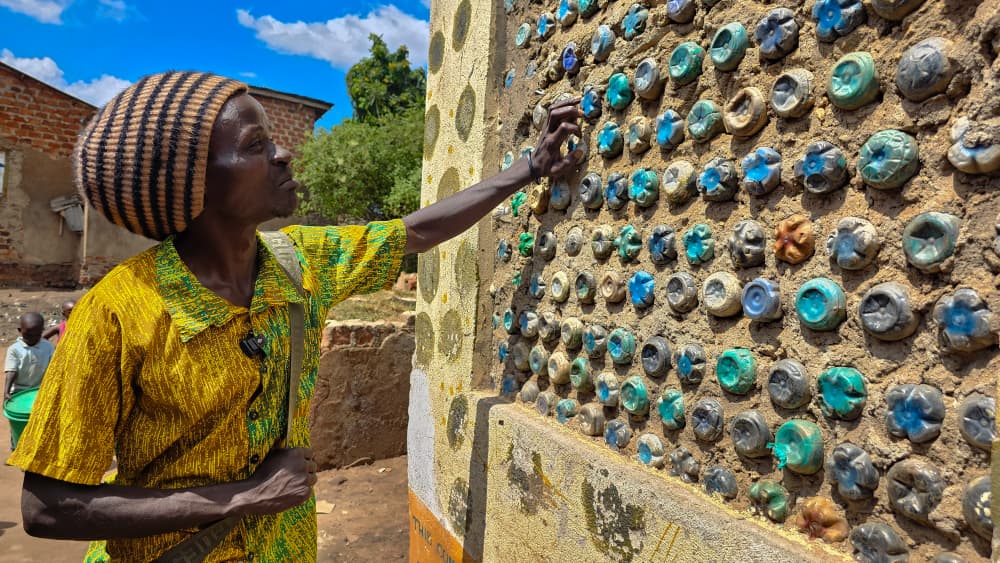
The toilet serves over 300 users daily and is designed to eliminate odor and flies through the use of sawdust which neutralizes harmful bacteria while preserving beneficial microbes.
The project also creates economic opportunities. Over 80 women and several youths are trained to collect littered diapers and other biodegradable waste.
Organic material is composted to produce nutrient-rich fertilizer while plastics are repurposed into tough bricks used in constructing the toilets. The initiative has produced more than 10,000 bricks so far providing income to local residents while addressing public sanitation needs.
Nearby a newer facility in Ddundu Mukono District is planned to convert organic waste into energy. However logistical and bureaucratic hurdles have slowed its operation. Residents and experts agree that such facilities, if fully functional, could drastically reduce the amount of uncollected waste choking Kampala’s streets.
Why Have All Solutions Failed to Yield Results?
As Uganda marked International E-Waste Day 2025, the country unveiled ambitious plans to transform its growing electronic waste challenge into an economic opportunity. Uganda is pioneering a circular economy model, recycling discarded electronics to reduce imports, curb pollution, and drive green innovation across industries.
At the same time, broader waste management in Kampala continues to face persistent challenges. Much of the city’s waste remains uncollected, and unmanaged dump sites create flooding risks and public health hazards.
The system relies heavily on private concessionaires who focus primarily on collection and dumping, with little infrastructure for recycling or value generation. Without proper funding and deliberate policy enforcement, household-level sorting remains largely ineffective.
Lord Mayor Elias Lukwago explains the limitations of the current approach. “It cannot be these concessionaires to lead us into a circular economy. It has to be a deliberate policy by KCCA and the central government. We can only enlist the support of these companies to facilitate the process but they cannot play the central role. There is no way to move into a circular economy without funding from the government to finance the agenda.”
He adds, “We need systems that allow us to recycle to generate value from waste and to break this vicious cycle of pick-and-dump. Multiple dump sites without proper management are taking us nowhere.”
Climate advocate Hedwig Arinaitwe points out the gaps at the community level. “Even when people want to practice better waste management, there is nowhere to dispose of certain types of waste, especially in the city. Our leaders need to do better. We need more collection points in the city, unique centers that can handle solid waste as well as other types of waste.”
She notes that high collection fees force some residents to dump waste in drainage channels during rainfall and emphasizes the need for subsidized fees to enable broader participation.
The experiences of Kampala’s authorities and residents reveal a clear pattern. National policies and strategies, including the Green Growth Report, NDP III, the Climate Change Act, and the Green Economy Recovery Plan, provide a framework for a circular economy, yet city-level implementation remains weak.
Without functioning infrastructure, accessible collection points, and proper financing, Uganda’s ambitious circular economy plans risk remaining aspirational, while Kampala continues to struggle with uncollected and mismanaged waste.
Recent News
© 2022 - Media Challenge Initiative | All Rights Reserved .


